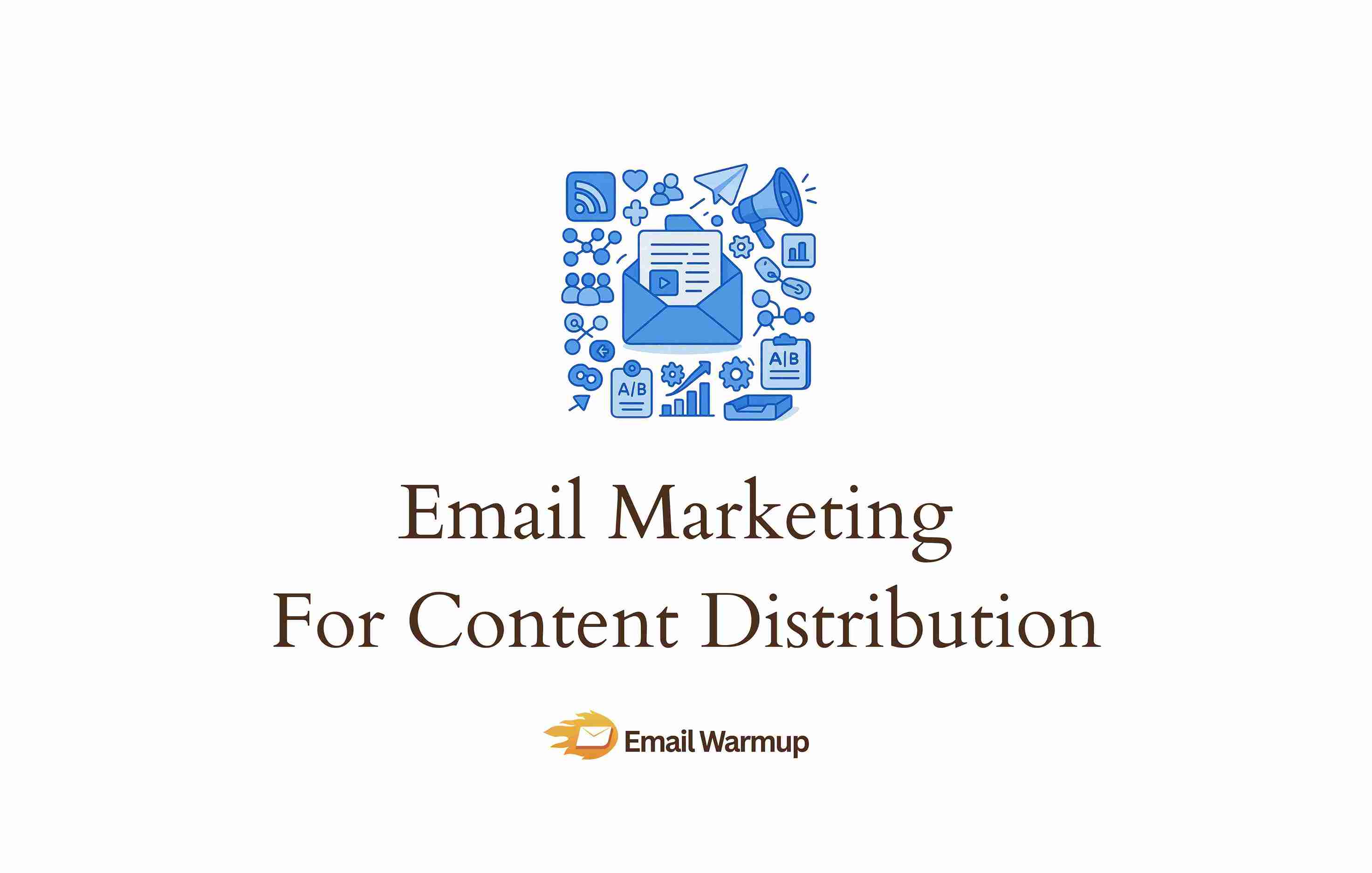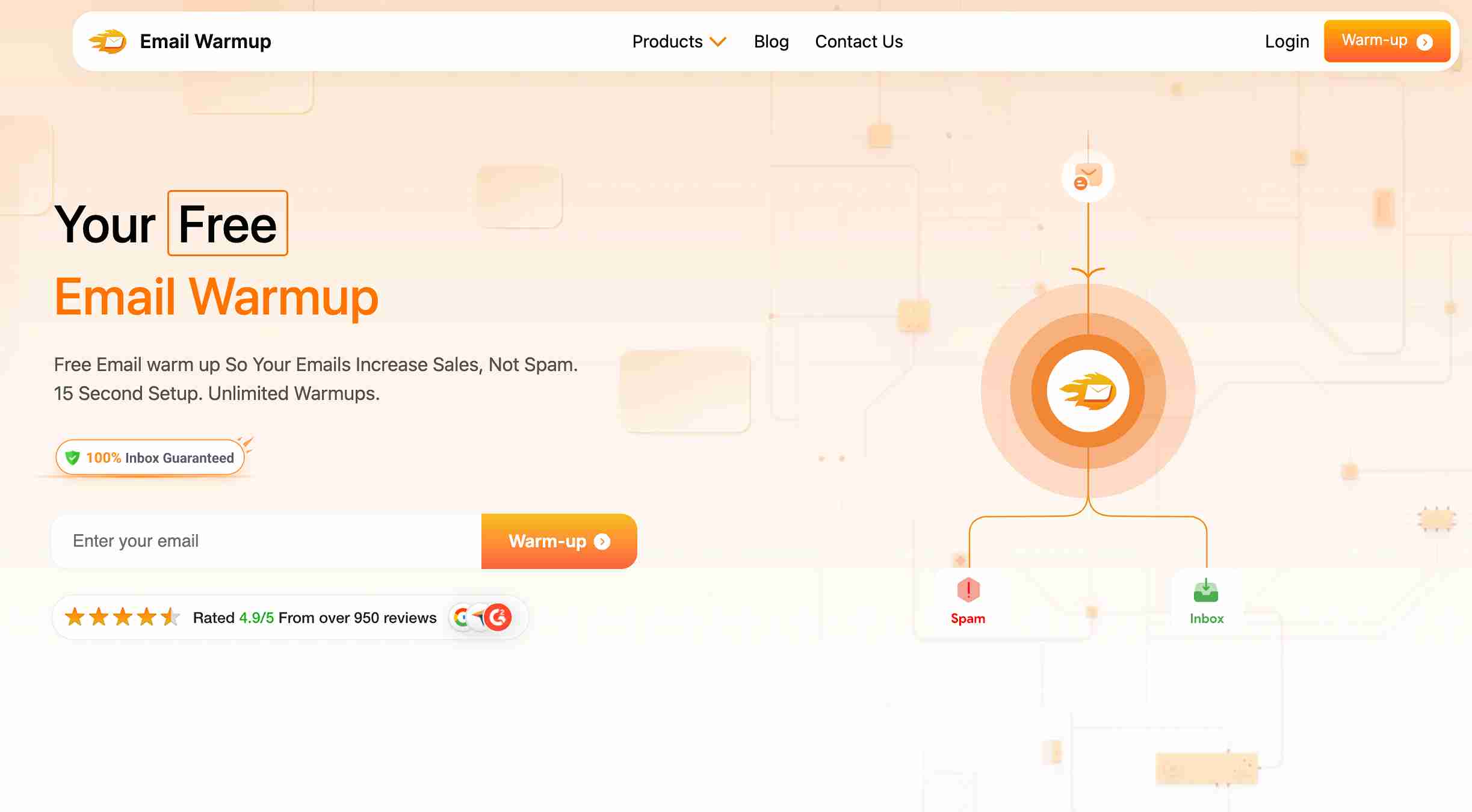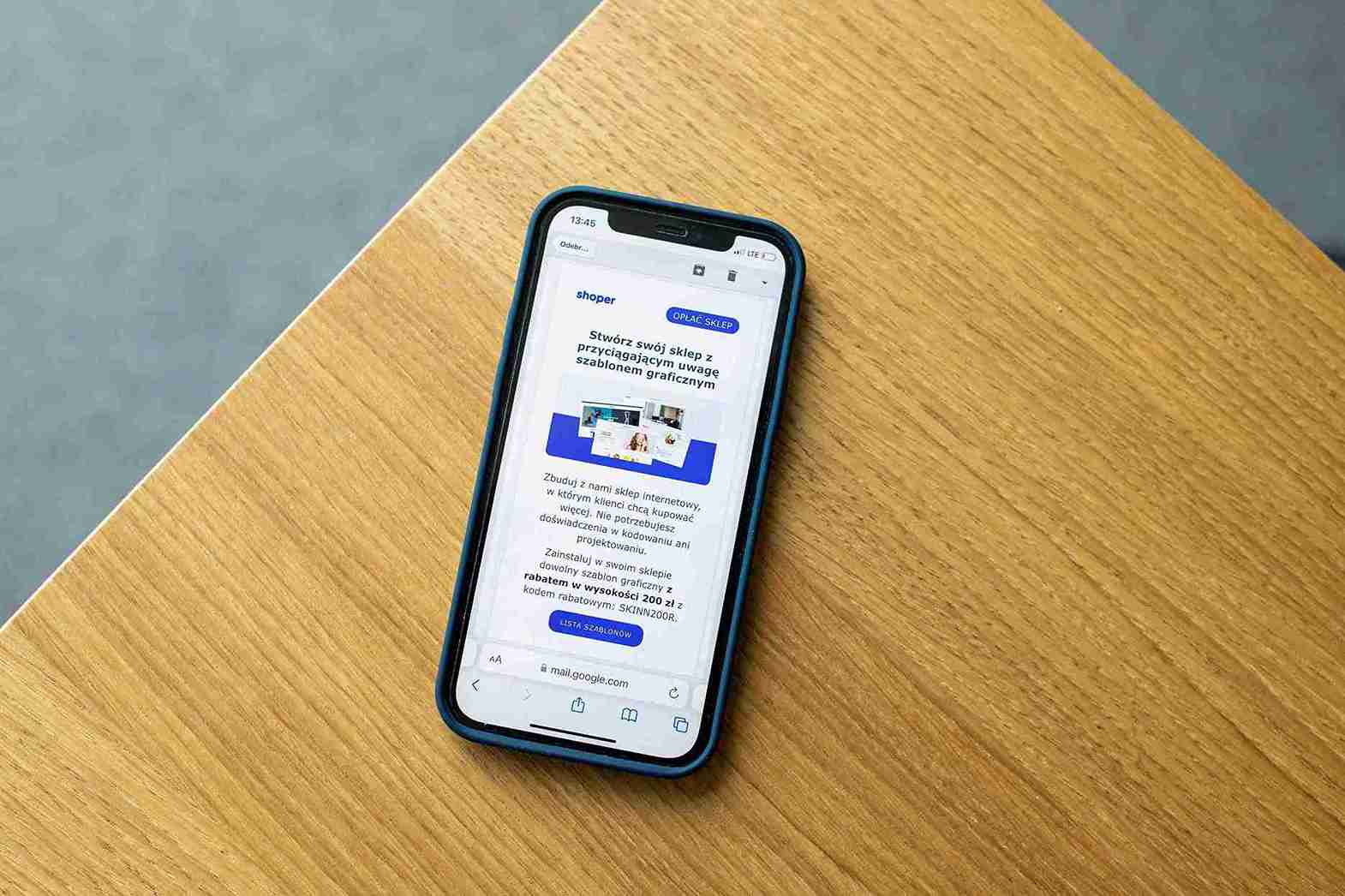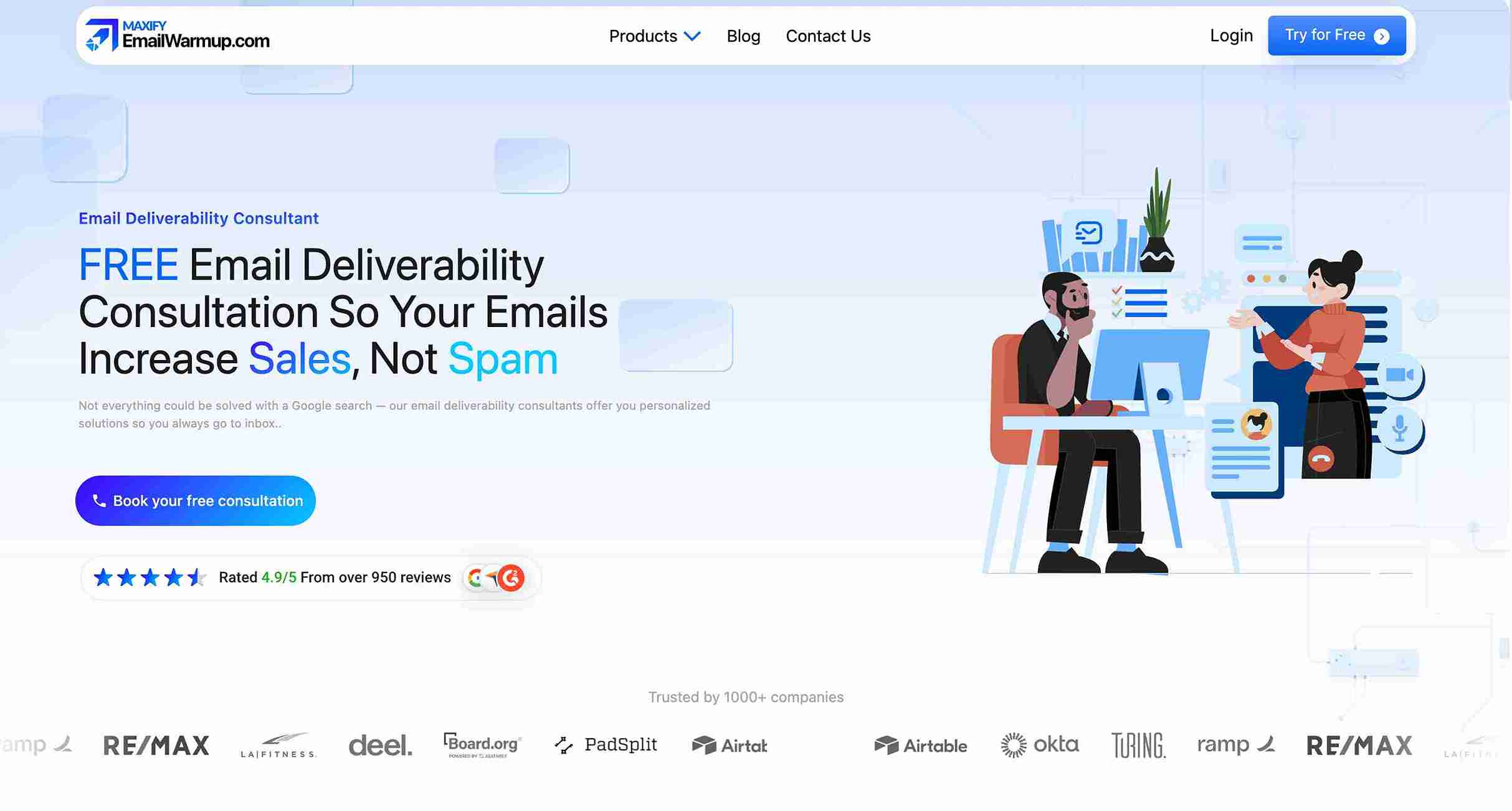
Social platforms keep changing their rules, organic reach keeps shrinking, and you’re left wondering if anyone actually saw what you worked so hard to create.
The best thing is that email marketing gives you direct access to your audience’s inbox, bypassing all that chaos. When done right, it delivers approximately $36-$40 for every $1 spent and consistently outperforms social media for content distribution.
As an email marketing consultant who has helped hundreds of businesses scale their content reach without tanking their email reputation, I’ve prepped this comprehensive guide that covers:
- Automation tactics that save time
- Why does it crush social media for reach
- How to segment your audience effectively
- The deliverability foundations you can’t ignore
- What email content distribution actually means
- How to measure what actually matters (not just vanity metrics)
Let’s dive in and explore how you can use email marketing for content distribution and get it seen!
TLDR: Your email content distribution cheat sheet
Here’s a quick skim of how you can use email marketing for content distribution:
| Strategy | What it does | Key metric to track |
| Segment your audience | Sends relevant content to specific groups based on behavior or interests | Click-through rate (CTR) |
| Package content strategically | Bundles blogs, videos, or insights into digestible email formats | CTR and conversion rate |
| Personalize beyond first names | Uses dynamic content and behavioral triggers for relevance | Click-to-open rate (CTOR) |
| Automate distribution | Schedules and sends content based on subscriber actions | Time saved and consistency |
| Optimize for mobile | Ensures emails look great on smartphones and tablets | Mobile open rate |
| Monitor deliverability | Keeps emails out of spam folders | Bounce rate and spam complaints |
| Track real engagement | Measures clicks and conversions instead of just opens | CTR ≥3% for B2B content |
Get your content seen before you even hit send
All the clever content packaging in the world won’t matter if your emails land in spam folders. (And trust me, it happens more often than you’d think.)
Before you dive into distribution tactics, you need to make sure your emails actually reach inboxes. That’s where proper email warmup and deliverability infrastructure come in.

EmailWarmup.com offers:
- Dedicated IP address for a consistent sending reputation
- Pre-send spam and email deliverability test for every campaign
- Unlimited email warmup to build your sender reputation before big content launches
- Unlimited deliverability consultations with experts who understand content campaigns
Want to see how it works?
Why choose email marketing for content distribution?
Email users hit 4.6 billion worldwide in 2025, with approximately 376.4 billion emails sent daily in 2025.
Among B2B marketers, approximately 71% use email newsletters as their main content distribution channel. But beyond ROI, there are many reasons that make email marketing for content distribution perfect!
You own your email list
When you build an email subscriber base, those contacts belong to you. Social platforms rent you space (and Facebook’s organic reach dropped from 16% to under 2% for large pages between 2012 and 2024, which explains why your posts get zero traction). With email, you have direct access without an algorithm deciding your content “isn’t engaging enough” today.
Precision targeting actually works here
Personalized emails achieve 29% higher open rates and 41% higher click-through rates compared to non-personalized emails, which beat pretty much every other channel.
You can send advanced content to advanced users, beginner content to beginners, and product updates to people who actually care about product updates (instead of annoying everyone with everything).
And the engagement is simply mindblowing!
Email is 40 times more effective than social media for customer acquisition (according to a 2014 McKinsey study), and approximately 73% of B2B buyers prefer email contact from sellers (though this varies by geography and industry). Your prospects want to hear from you via email, not through LinkedIn DMs that feel like spam.
How do I segment my audience effectively?
You’re probably sending the same content to everyone right now (most people do when they start). Some love it, some ignore it, and some unsubscribe. The problem isn’t your content — you’re sending beginner material to advanced users and advanced material to beginners.

Segmentation addresses this by dividing your subscriber list based on specific criteria and then sending content that aligns with each segment’s interests, behavior, or stage in the customer journey. When you segment properly, CTR can increase significantly because the content feels relevant to each person.
Smaller, segmented campaigns with fewer than 50 recipients average 5.8% reply rates, compared to 2.1% for campaigns over 1,000 recipients. Smaller and smarter beats bigger and generic every time.
Behavioral segmentation
Group people by what they’ve done, not what you assume about them.
If someone downloaded your advanced guide, send more advanced content. If someone abandoned a webinar registration, follow up with highlights or a recording.
Similarly, if someone clicks every product update email, you give them more of those (they’re telling you what they want).
Track these signals:
- Pages they’ve visited
- Email links they’ve clicked
- Webinars they’ve attended
- Content they’ve downloaded
- Resources they’ve consistently ignored
Engagement level segmentation
Activity level determines what you send and how often.
People who open almost everything should get different content than those who haven’t engaged in six months (and if someone hasn’t opened an email in 120 days, remove them from your list before they hurt your sender reputation — though post-Apple Mail Privacy Protection, tracking clicks and other engagement signals matter more than opens alone).
Send re-engagement campaigns to inactive subscribers (no opens in 90+ days). Give exclusive early access to your most engaged readers.
Adjust email frequency based on engagement patterns, because your most active subscribers might want daily updates while others prefer weekly digests.
Customer journey segmentation
Your new subscriber needs different content than your long-time customer.
| Segment | Content focus | Example topics |
| New subscribers | Onboarding, foundational concepts | “Getting started” guides, basic terminology, welcome series |
| First-time buyers | Encouraging repeat engagement | Product tips, related resources, success stories |
| Active customers | Advanced strategies, insider tips | Expert techniques, exclusive insights, beta access |
| Loyal advocates | VIP treatment, exclusive access | Early releases, special offers, behind-the-scenes content |
The golden rule is to send introductory content to newcomers and insider strategies to experienced customers. The distinction matters more than most marketers realize.
What’s the best way to package content for email?
Creating content is one skill. Packaging it for email distribution is another (and honestly, the second one matters more for reach).
You need to make content feel native to the inbox, not like you dumped a blog link into an email and called it done. People receive approximately 115-125 emails per day on average. Your content needs to stand out in that flood.

Weekly content digests
Bundle recent blog posts, videos, or updates into one organized email.
Give each piece a compelling snippet that makes people want to click (not just the title, which rarely sells the content well enough). Make it scannable so readers can jump to what interests them without scrolling through everything.
Structure your digest with clear sections, brief descriptions (2-3 sentences max per item), and visible CTAs for each piece. Your subject line should hint at the best content inside, not just say “Weekly Digest #47” (which tells them nothing).
Curated newsletters
Mix your content with relevant industry insights to build credibility and position yourself as a trusted resource. Include quick tips from your expertise, commentary on industry trends, resources that genuinely help, and your articles alongside valuable external content.
When you share other people’s content alongside your own, you signal that you care about helping your audience (not just promoting yourself). That trust pays off when you do promote your own content, because readers know you’re selective about what you share.
Content series
Breaking comprehensive topics into multiple emails creates anticipation and higher engagement than one massive email. Readers are more likely to finish a 5-part series than a single 5,000-word monster (plus you get five chances for them to engage instead of one).
| Series type | Structure | Best for |
| Sequential learning | 3-5 emails building on each other | Complex topics requiring foundation first |
| Weekly themes | Different angle on same topic each week | Exploring multifaceted subjects |
| Case study series | Real examples across multiple emails | Showing different applications or industries |
| Challenge series | Daily or weekly action items | Getting readers to implement strategies |
Example breakdown for a content distribution series:
- Day 1: Why email beats social (establishes value)
- Day 2: Segmentation strategies (teaches foundation)
- Day 3: Content packaging tactics (shows execution)
- Day 4: Measurement and optimization (proves results)
- Day 5: Common mistakes to avoid (prevents failure)
Each email should stand alone while building toward a complete picture. Readers who miss one shouldn’t feel lost in the next one.
Exclusive content
Give email subscribers content they can’t get anywhere else.
Early access to new resources, subscriber-only insights, bonus sections not in the public version, or behind-the-scenes content all work well for reducing unsubscribe rates and increasing open rates.
Exclusivity drives subscriptions. When people know they’ll miss out by unsubscribing, they stay subscribed even during quiet periods (and come back when you send something valuable).
Triggered emails based on actions
Responding to subscriber behavior in real time creates personalized experiences without manual work. Set up automation once, and it runs forever.
| Trigger | Email response | Timing |
| Downloads beginner guide | Send intermediate content | 3-5 days later |
| Clicks specific topic repeatedly | Send more content on that topic | Within 24 hours of the second click |
| Visits the pricing page | Send case studies and comparison guides | Immediately |
| Abandons form | Send a simplified version or an FAQ | 1 hour later |
| Opens every email for 2 weeks | Send exclusive VIP content | After 14th consecutive open |
| Zero opens for 60 days | Send a re-engagement campaign | At the 60-day mark |
Triggers work because they’re contextual.
Someone who just downloaded your beginner guide is primed for intermediate content next week (they’re actively learning). Someone who visits your pricing page three times in two days is comparing options (they need validation).
Automation delivers the right content at the right moment.
How do I make my emails actually readable?
Approximately 42-55% of email opens happen on mobile devices, which means your carefully designed desktop email probably looks terrible on phones. Your emails need to work on smartphones first, desktop second.
Add plenty of white space so text doesn’t feel cramped (mobile screens are small, and crowded text gets ignored). Keep content scannable with clear headings and short paragraphs.
Use responsive design templates that adapt automatically, and test on actual mobile devices (not just desktop previews, which lie about how things really look).
Subject lines make or break open rates
Keep them under 50 characters so they don’t get cut off on mobile. About 47% of users decide whether to open based on the subject line alone, and personalized subject lines increase open rates by 26%.
Patterns that work consistently:
- Benefit-driven: “3 ways to double your email CTR”
- Question-based: “Struggling with content distribution?”
- Specificity-driven: “We analyzed 50,000 content emails — here’s what worked”
- Curiosity-driven: “The metric most marketers ignore”
Generic subject lines like “Newsletter #12” or “October Update” waste your best opportunity to earn an open — make every subject line sell the content inside.
Clear calls to action
Make CTA buttons large enough to tap easily on mobile (at least 44×44 pixels).
Use action-oriented language that tells people exactly what happens when they click. “Read the full guide” beats “Click here” because it sets expectations.
Position your primary CTA above the fold when possible.
Make it visually distinct with contrasting color, white space around it, and a button format rather than a text link. If your email is long, repeat your main CTA at the bottom for people who scroll (because many will).
Visual hierarchy matters
Put your most important content and CTAs above the fold.
Use images sparingly but strategically (one or two strong images beat ten mediocre ones). Make sure your email delivers value even if images don’t load, because many email clients block images by default.
Structure your email with clear sections, visible subheadings, and obvious breaks between topics.
Readers should be able to scan your email in ten seconds and know what it’s about (and whether it’s worth their time to read it fully).
How do I grow my email list with content?
You can’t distribute content to an empty list (obvious but worth stating). Growing your list means creating compelling reasons for people to subscribe, then making the subscription process frictionless.
Lead magnets offering value
Generic “Sign up for our newsletter” CTAs convert at 1-2%. Specific value propositions convert at 5-10%. The difference is offering something concrete in exchange for an email address.
Strong lead magnets for content distribution:
- Checklists or frameworks
- Case studies showing real results
- Templates or worksheets that people can use immediately
- Resource libraries (curated lists of tools, articles, books)
- Comprehensive guides (2,000+ words on specific topics)
Your lead magnet should solve a specific problem your ideal subscriber faces. Someone who downloads “The Complete Guide to Email Segmentation” is probably interested in your future emails about segmentation strategies (which makes them a perfect subscriber for content distribution emails).
Placement strategies
Where you ask for subscriptions matters as much as what you offer.
Blog posts with inline CTAs after the first 300 words convert better than sidebar forms (because people are already engaged with your content at that point). Exit-intent popups work when you offer genuine value (not when you interrupt reading just to collect emails).
Place subscription CTAs in high-traffic locations like your homepage, about page, and resource pages. Add them to guest posts and podcast show notes. Include them in your email signature and social media bios. Test different placements and track conversion rates to find what works for your audience.
Content upgrades
Content upgrades are lead magnets specific to individual pieces of content. The actions are simple — but bear high fruit.
For example, if they’re reading an article about segmentation, the next step should be to download the segmentation template. If they’re reading about content packaging, the natural CTA should be to get the content calendar. This specificity converts at 10-25% because you’re offering exactly what the reader needs right now.
Create content upgrades for your top-performing posts (the ones getting the most traffic).
Use simple tools like Google Docs or Canva to create PDFs, then gate them behind an email signup. Each upgrade builds your list with highly targeted subscribers who care about specific topics.
What metrics actually matter for content distribution?
Vanity metrics look good in reports, but don’t tell you whether your content distribution is working. Opens, sends, and list size feel important, but don’t measure real engagement or business impact.
Track these instead:
| Metric | What does it tell you | Good benchmark |
| Click-through rate | How compelling your content is | 3-5% for B2B |
| Click-to-open rate | Email quality among engaged readers | ~10-15% |
| Conversion rate | How many readers take the desired action | 2-5% depending on action |
| Unsubscribe rate | Content relevance and frequency | Under 0.5% per send |
| Reply rate | Actual engagement and relationship building | 1-3% for B2B |
| Revenue per email | Business impact of your content | Varies by industry |
Click-through rate matters more than open rate because clicks show genuine interest (and with Apple’s Mail Privacy Protection inflating open rates, opens are less reliable now).
When someone clicks, they are engaging with your content, making them more likely to buy, share, or recommend your work.

Also, A/B testing improves results, as testing everything at once teaches you nothing.
Test one element per campaign so you know what caused the difference in results. Start with subject lines (biggest impact on opens), then test email length, CTA placement, sending time, and content format.
Run tests on at least 1,000 subscribers per variant for statistical significance (smaller tests produce unreliable results). Let tests run for at least 24 hours before declaring a winner. Document your results so you build institutional knowledge over time.
Common tests worth running:
- One CTA vs. multiple CTAs
- Morning vs. afternoon send times
- Digest format vs. single-topic format
- Question-based vs. statement-based subject lines
- Text-heavy vs. image-heavy emails
- Short vs. long subject lines
Your audience is unique, so what works for others might not work for you. Test consistently and let data guide your decisions.
How do I repurpose content across formats?
Creating content takes time. Repurposing multiplies your effort by turning one piece into five or ten different formats, each suitable for different distribution channels and audience preferences.
Your 2,000-word blog post can become a video script, podcast episode, Twitter thread, LinkedIn article, email newsletter, infographic, and slide deck.
Each format reaches different people who prefer different content types (some people hate reading but love video, others hate video but love reading).
Start with your highest-performing content (the pieces that already resonate with your audience). Repurpose those first because you know they work.
Extract key points, examples, and frameworks that stand alone, then rebuild them in different formats.
| Original format | Repurposed versions | Distribution method |
| Blog post (2,000 words) | 5-part email series, Twitter thread, LinkedIn article, YouTube video, podcast episode | Email, social, video platforms |
| Case study | Email series, webinar, infographic, slide deck, podcast interview | Email, presentations, social |
| Guide or tutorial | Checklist, email course, video series, worksheet, template | Email, lead magnet, membership content |
| Data analysis | Infographic, Twitter thread, slide deck, webinar, newsletter | Email, social, presentations |
Mention each new format in your email newsletter. Someone who skipped your blog post might watch your video or download your template (different formats appeal to different learning styles).
What common mistakes kill content distribution results?
You can do everything right with content creation and still fail at distribution. These mistakes show up repeatedly across industries and company sizes.
Sending to everyone instead of segmenting
Your beginner subscribers don’t want advanced content, and your advanced subscribers don’t want beginner content. When you send everything to everyone, you annoy both groups. Segment by behavior and interests, then send relevant content to each group.
Inconsistent sending schedule
Sending three emails one week and zero the next four weeks trains subscribers to ignore you. Pick a schedule you can maintain (weekly, bi-weekly, or monthly) and stick to it. Consistency builds anticipation and habit.
Focusing on email design instead of content
Pretty emails with weak content perform worse than plain emails with strong content. Your readers care about value, not whether you used the perfect shade of blue. Write compelling content first, then make it look acceptable (not perfect).
Ignoring mobile optimization
Testing on a desktop and shipping without checking mobile is like building a house and forgetting to install a front door. Most opens happen on phones, so your emails need to work on phones first.
Buying email lists
Purchased lists contain people who never opted in to hear from you. They mark you as spam, tank your sender reputation, and waste your money. Build your list organically with people who actually want your content (it takes longer, but works infinitely better).
Not cleaning your list
Dead email addresses bounce, inactive subscribers drag down your engagement rates, and spam traps destroy your deliverability. Remove addresses that bounce, unengaged subscribers after 120 days. You can use a free email validation API to help you out with that.
What are the basic deliverability requirements?
You need proper authentication before sending bulk email (defined as 5,000+ daily emails to Gmail, Yahoo, or Microsoft addresses). Gmail and Yahoo started enforcing stricter requirements in February 2024, and Microsoft joined them in May 2025.
Set up SPF, DKIM, and DMARC authentication to prove you’re who you say you are. Keep spam complaint rate below 0.3% (ideally below 0.1%). Keep bounce rate under 2%. Include one-click unsubscribe in email headers and process opt-out requests within 48 hours.

EmailWarmup.com handles these technical requirements. They set up your authentication, gradually warm up your domain, and provide an email deliverability consultant to help you keep you out of spam folders.
Frequently asked questions
Here are some commonly asked questions about using email marketing for content distribution:
Most successful newsletters send weekly or bi-weekly. Consistency matters more than frequency — if every email delivers value, people look forward to hearing from you. Test different frequencies and watch your unsubscribe rates. If they spike after increasing frequency, you’ve found your limit.
For B2B content, aim for 3-5% CTR. Consumer brands often see 2-3%. Focus on improving your CTR over time rather than comparing yourself to industry averages. If you’re consistently hitting 3% or higher, you’re doing well.
Depends on your content volume and audience preferences. If you publish 2-3 pieces per week, a weekly digest works well. For long-form comprehensive content, breaking it into a multi-part series creates anticipation and higher engagement. Test both approaches with your audience and let data decide.
Start with proper authentication (SPF, DKIM, DMARC). Keep your list clean by removing bounces and inactive subscribers. Send only to people who explicitly opted in. Create valuable content that drives engagement (opens and clicks signal to email providers that your emails are wanted). These fundamentals prevent most spam folder issues.
CTR (click-through rate) measures clicks as a percentage of total emails sent. CTOR (click-to-open rate) measures clicks as a percentage of emails opened. With Apple’s Mail Privacy Protection inflating open rates, CTR gives you a cleaner metric of overall campaign performance.
Plan for 8-12 weeks of gradual warmup. Start with small volumes (50-100 emails per day) to your most engaged subscribers, then slowly increase over time. If you’re launching a weekly newsletter, mirror that cadence during warmup so email providers recognize your sending pattern. Rushing email warmup is one of the biggest mistakes content marketers make.
If you’re sending fewer than 10,000 emails per month, probably not. Shared IPs work fine for lower volumes. Once you exceed 50,000-100,000 emails monthly, many email service providers recommend a dedicated IP to give you more control over your sender reputation. Just remember that dedicated IPs require proper warmup before ramping to full volume.
References
- Content Marketing Institute. (2025). B2B Content Marketing Report.
- Litmus. (2024-2025). Email Marketing ROI Statistics.
- Omnisend. (2025). Email Marketing Statistics Report.
- Oberlo. (2025). Email Marketing Statistics for 2025.
- DemandSage. (2025). Email Marketing Statistics and Growth Data.
- Moosend. (2025). Email Marketing Statistics and Trends.
- GetResponse. (2025). Email Marketing Statistics Report.
- Campaign Monitor. (2024). B2B Email Marketing Benchmarks.
- Hunter.io. (2025). State of Cold Email Report.
- SuperOffice. (2024). Email Marketing Subject Line Study.
- Braze. (2025). Guide to Email Deliverability Updates.
- Litmus. (2025). Email Deliverability Rules for Gmail and Yahoo.
- Mailgun. (2024). Gmail and Yahoo Inbox Requirements Update.
- MarTech. (2025). Bulk Email Restrictions from Google, Yahoo, and Microsoft.
- PowerDMARC. (2025). Google and Yahoo Email Authentication Requirements.
- Mailgun. (2025). State of Email Deliverability Report.



